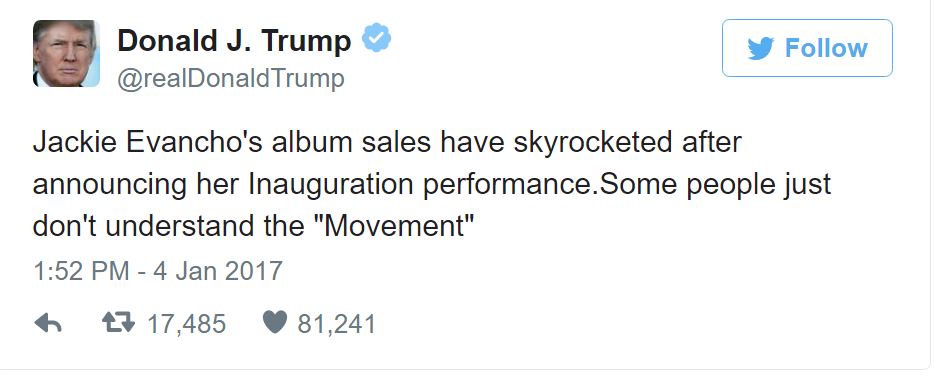Bullshitter in Chief

If you’ve been paying attention to the news over the past week or so, you know that over the weekend America was introduced to the concept of “alternative facts.” After Trump administration Press Secretary Sean Spicer rebuked the media for accurately reporting the relatively small crowds at President Donald Trump’s inauguration, senior White House aide Kellyanne Conway told NBC’s “Meet the Press” that Spicer wasn’t lying; he was simply using “alternative facts.”
News outlets are still working through the process of figuring out rewhat to call these mischaracterizations of reality. (“Alternative facts” seems to have been swiftly rejected.) Many outlets have upped their fact-checking game. The Washington Post, for instance, released a browser extension that fact-checks tweets by the president in near real-time.
Other outlets have resisted labeling Trump’s misstatements as lies. Earlier this year, for instance, the Wall Street Journal’s editor-in-chief Gerard Baker insisted that the Wall Street Journal wouldn’t label Trump’s false statements “lies.”
Baker argued that lying requires a “deliberate intention to mislead,” which couldn’t be proven in the case of Trump. Baker’s critics pushed back, raising valid and important points about the duty of the press to report what is true.
As important as discussions about the role of the press as fact-checkers are, in this case Baker’s critics are missing the point. Baker is right. Trump isn’t lying. He’s bullshitting. And that’s an important distinction to make.
Bullshitter-in-chief?
Bullshitters, as philosopher Harry Frankfurt wrote in his 1986 essay “On Bullshit,” don’t care whether what they are saying is factually correct or not. Instead, bullshit is characterized by a “lack of connection to a concern with truth indifference to how things really are.” Frankfurt explains that a bullshitter “does not care whether the things he says describe reality correctly. He just picks them out, or makes them up, to suit his purpose.”
In addition to being unconcerned about the truth (which liars do care about, since they are trying to conceal it), Frankfurt suggests that bullshitters don’t really care whether their audience believes what they are saying. Indeed, getting the audience to believe something is false isn’t the goal of bullshitting. Rather, bullshitters say what they do in an effort to change how the audience sees them, “to convey a certain impression” of themselves.
In Trump’s case, much of his rhetoric and speech seems designed to inflate his own grand persona. Hence the tweets about improving the record sales of artists performing at his inauguration and his claims that he “alone can fix” the problems in the country.
Likewise, his inaugural address contained much rhetoric about the “decayed” state of the country and rampant unemployment (a verifiably false statement). Trump then proceeded to claim that he was going to rid the country of these ailments. The image of Trump as a larger-than-life figure who will repair a broken country resonates with his audience, and it doesn’t work without first priming them with notions of widespread “carnage.”
A stinky, slippery slope
There are several problems with Trump adopting the bullshit style of communication.
First, misinformation is notoriously hard to correct once it’s out there, and social media, in particular, has a reputation for spreading factually inaccurate statements and conspiracy theories.
One study, for instance, examined five years of Facebook posts about conspiracy theories. The authors found that people tend to latch onto stories that fit their preexisting narratives about the world and share those stories with their social circle. The result is a “proliferation of biased narratives fomented by unsubstantiated rumors, mistrust, and paranoia.” Another study examined Twitter rumors following the Boston Marathon bombing in 2013. These researchers explored how misinformation about the identity of a suspected terrorist abounded on the social media platform. They found that although corrections to the error eventually emerged, they didn’t have the same reach as the original misinformation.
Second, because Trump’s communication style relies heavily on anger, people who are predisposed to his message may become even less critical of potential bunk. Research suggests that when people are angry, they evaluate misinformation in a partisan way, typically accepting the misleading claims that favor their own political party. One study, for instance, primed participants by having them write essays that made them feel angry about a political issue. The authors then presented them with misinformation about the issue that either came from their own party or the opposing party. Participants who felt angry were more likely to believe their party’s misinformation than people who were primed to feel anxious or neutral.
Finally, a communications strategy based on bullshit inherently makes enemies of anyone who would seek to reinstate the truth and expose his statements as bunk. Journalists, scientists, experts and even government officials who disagree with him are subject to charges of ineptitude, partisanship or conspiracy. They’re then threatened with restrictions on funding, access and speech. We’ve already seen this happening with the suggestion that Environmental Protection Agency data may undergo review by political appointees before being made public.
In fairness, Trump may very well believe the things that he’s saying. He was recently quoted as saying “I don’t like to lie.” And people can convince themselves of things that aren’t true.
There’s some evidence, for instance, that he avoided information that Muslims in New Jersey didn’t actually celebrate the terrorist attacks on September 11th, as he claimed. Like all of us, Trump may be putting up psychological defenses to avoid accepting information that challenges his worldviews, as research suggests all of us do. So although he’s corrected frequently by journalists and on social media, it’s a very real possibility that he’s simply shut out anyone or any source of information that threatens his way of seeing things.
But this is of little comfort. Trump has an affinity for speaking mistruths with little consideration for their factual accuracy. Combine this with his relentless efforts to discredit anyone who challenges his declarations and his heavy use of social media – where posts and tweets can go viral with little context and no fact-checking – and it sets the stage for a dangerous turn in American political and civil discourse.

